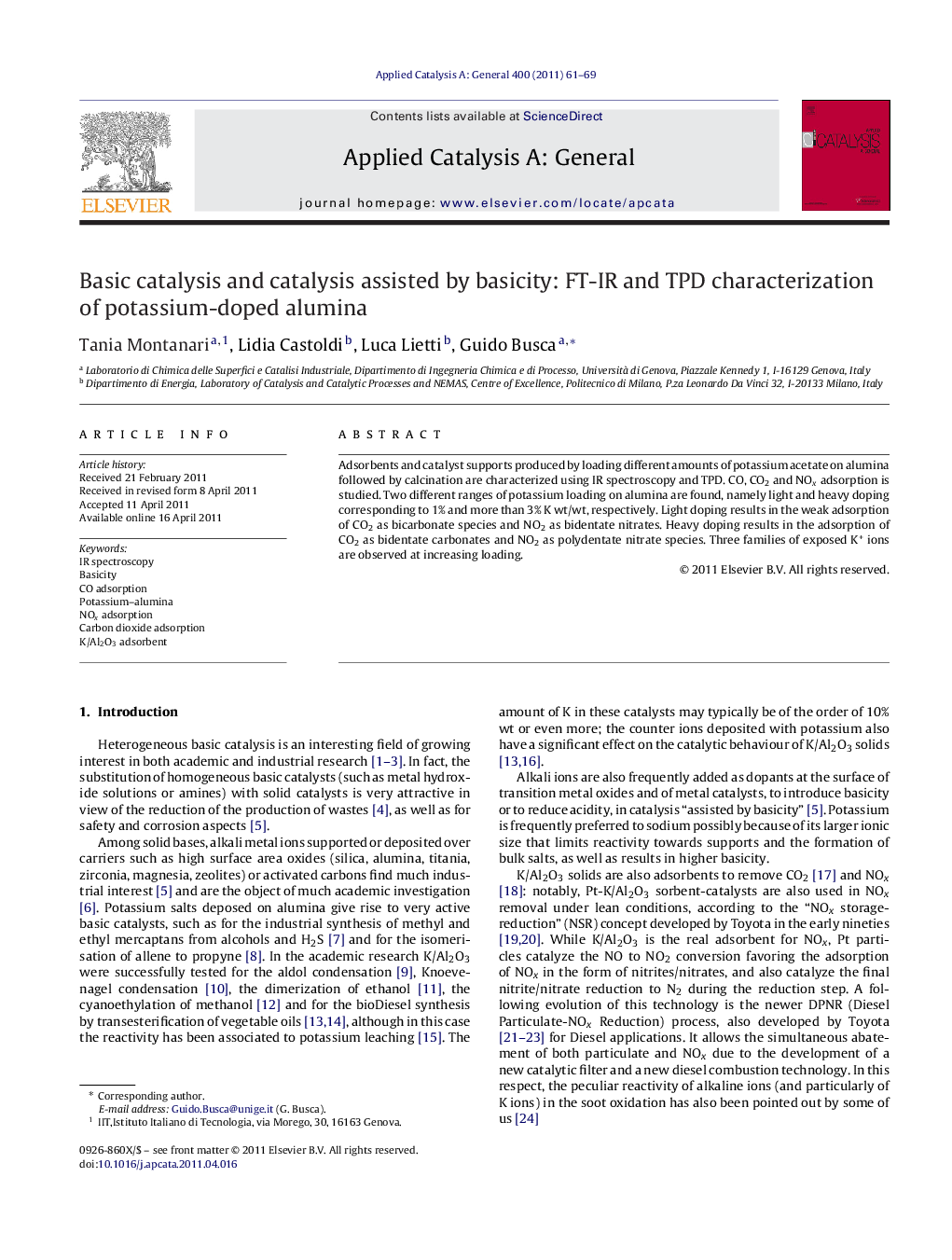| Article ID | Journal | Published Year | Pages | File Type |
|---|---|---|---|---|
| 41325 | Applied Catalysis A: General | 2011 | 9 Pages |
Adsorbents and catalyst supports produced by loading different amounts of potassium acetate on alumina followed by calcination are characterized using IR spectroscopy and TPD. CO, CO2 and NOx adsorption is studied. Two different ranges of potassium loading on alumina are found, namely light and heavy doping corresponding to 1% and more than 3% K wt/wt, respectively. Light doping results in the weak adsorption of CO2 as bicarbonate species and NO2 as bidentate nitrates. Heavy doping results in the adsorption of CO2 as bidentate carbonates and NO2 as polydentate nitrate species. Three families of exposed K+ ions are observed at increasing loading.
Graphical abstractFigure optionsDownload full-size imageDownload high-quality image (145 K)Download as PowerPoint slideHighlights► A detailed characterization of catalysts constituted by potassium doped γ-Al2O3 is reported. ► IR spectra of adsorbed CO, CO2 and NOx and TPD of CO2 and NOx are reported. ► two levels of doping occurs. ► At 1% wt/wt loading the surface of alumina is partially neutralized. ► Only above 3% wt/wt medium-strength basic sites form.
